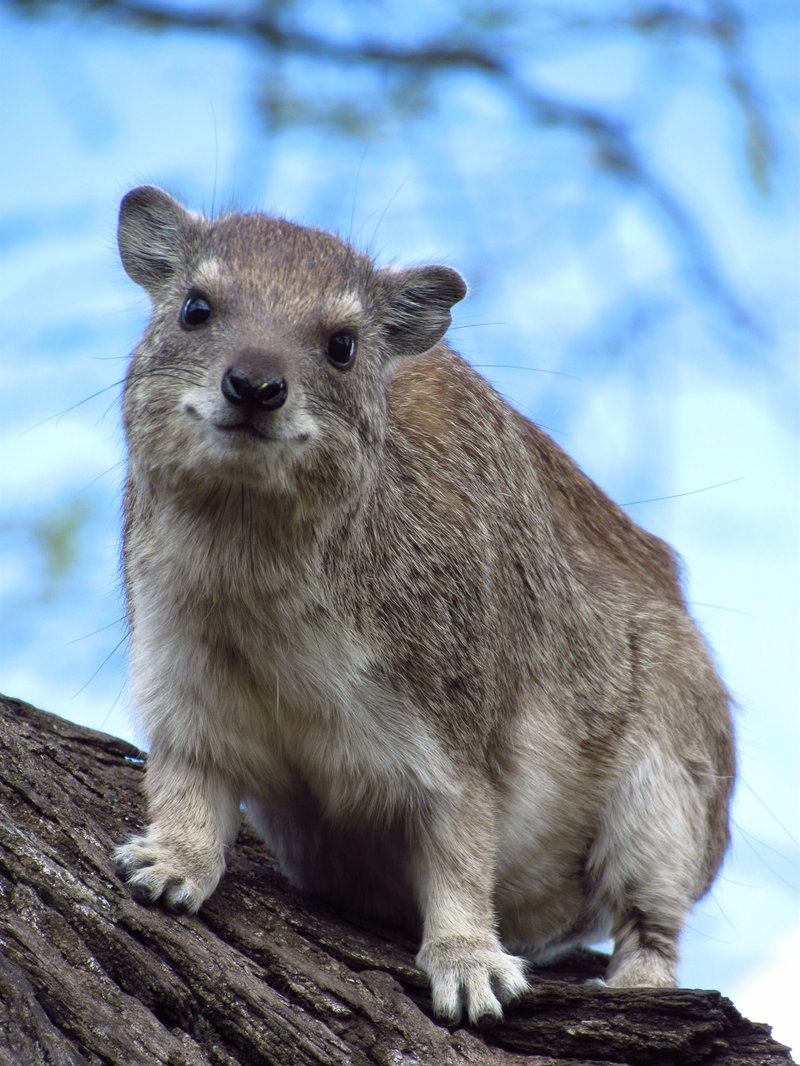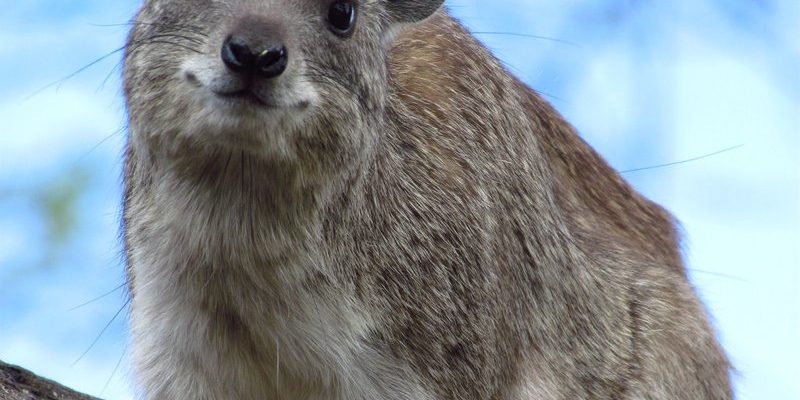
At first glance, you might not even realize how special these critters are. They’re often mistaken for rodents, but they actually belong to a different group called Afrotheria. This group includes elephants, sea cows, and aardvarks. Pretty interesting, right? You might be thinking, “How can a cute little hyrax be related to such giant animals?” Well, that’s just one of the many surprises this creature has to offer. Let’s explore what makes the rock hyrax an animal worth knowing about!
1. Close Relatives of Elephants
Here’s the thing: the rock hyrax might not look like an elephant, but they are actually very closely related. Scientists place them in a group called Afrotheria, which branches off to include elephants and manatees. How cool is that? Just like you might find similarities in your family tree, the rock hyrax and elephants share a common ancestor that dates back millions of years.
You might be wondering how these differences developed. While elephants grew to be the giants of the animal kingdom, rock hyraxes remained small and agile, reaching only about 12 to 30 inches in length. Despite their size differences, both animals share certain features, like unique teeth and a similar diet. Hyraxes are herbivores, munching on leaves, fruits, and grasses, just like how elephants graze on a variety of plants.
2. Social Creatures
Rock hyraxes are quite the social bugs! Typically, they live in groups called colonies that can include up to 50 individuals. These little families hang out on rocky ledges or cliffs, where they feel safe from predators. Imagine a bunch of friends hanging out in a café where they can keep an eye out for anyone creeping up.
Each colony has a leader, often the oldest and most experienced hyrax of the group. They communicate with each other through a variety of vocalizations, including barks, whistles, and grunts. Honestly, it’s like their own little hyrax language! This social behavior helps them warn each other about dangers and to find food together, enhancing their chances of survival.
3. Incredible Climbers
Ever seen a hyrax scale a rocky cliff? It’s like watching a tiny mountain goat! Rock hyraxes are excellent climbers and spend a lot of their time on steep, rocky terrain. Their built-in climbing skills come from their strong, padded feet and short legs, which allow them to grip slippery surfaces.
This adaptability is key to their survival. By living in hard-to-reach areas, they avoid many predators. Hawks, snakes, and even leopards may be lurking below, but these clever little creatures can dart up into the rocks to safety in a flash. You might say they’ve got their very own escape artist routine down to a science!
4. Unique Adaptations
Let me explain something cool about rock hyraxes: they have some fascinating adaptations that help them survive in their harsh environments. For starters, they can tolerate extreme temperatures. Living in rocky, mountainous regions means they experience both scorching days and chilly nights, but these little guys can manage just fine.
Additionally, rock hyraxes have special adaptations in their kidneys that help them retain water. This is crucial because they primarily get their moisture from the plants they eat. So, they don’t need to drink water as often as you might expect. You could say they’re nature’s version of a built-in water bottle!
5. Their Unique Diet
Rock hyraxes are primarily herbivores, which means they mainly eat plants. However, their diet is pretty varied! They enjoy munching on leaves, grasses, fruits, and even bark. You might even spot them nibbling on some tender shoots during the day, demonstrating their foraging skills.
What’s particularly interesting is the way they eat. These little munchers have continuously growing incisors, similar to rabbits. This means they need to gnaw on tough plants to keep their teeth in check. If they didn’t, their teeth could grow too long, leading to problems. Talk about a unique dental routine!
6. Communication Skills
You’ve probably figured out by now that rock hyraxes are chatty little creatures. Their social interactions include using vocalizations that carry different meanings. From warning calls to mating calls, they communicate with various sounds that may leave you intrigued.
For instance, when a predator approaches, they’ll emit quick barks to alert their fellow colony members. It’s like that moment when you hear your friend shout, “Heads up!” and you instinctively duck. Their vocal cords are adapted to create a range of sounds, making them effective communicators in their rocky homes.
7. Life Expectancy and Reproduction
You might think that living in the wild means a short life, but rock hyraxes can actually live up to around 10 years in the wild and even longer in captivity. Females typically give birth to one or two pups after a gestation period of around 7 to 8 months. That’s quite a commitment for such small animals!
Once the babies are born, they stay close to their mothers for protection and nurturing. Mom will keep a watchful eye on her pups while teaching them the ropes of foraging and climbing. Imagine a parent guiding their child on the best climbing spots and tasty treats. It’s a sweet scenario in the world of hyraxes!
8. Eco-Friendly Impact
Believe it or not, rock hyraxes play a significant role in their ecosystem. By eating various plants, they help in seed dispersal. When they munch on fruits, the seeds can pass through their system unharmed and later sprout when deposited elsewhere. It’s like nature’s little gardeners!
Their grazing habits also contribute to maintaining healthy vegetation. By keeping certain plants in check, they’re helping create a balanced environment for other wildlife. So next time you see a rock hyrax, remember they’re doing their part in the big picture of nature!
9. Habitat and Distribution
Rock hyraxes are primarily found in Africa, particularly in countries like South Africa, Kenya, and Tanzania. They prefer rocky terrain with plenty of crevices to hide and play in. You might find them basking in the sun on a warm stone, enjoying their surroundings.
Their habitat choice is essential for their survival. The rocky areas provide not only safety from predators but also access to their favorite food sources. With their playful and curious nature, finding them in their natural habitat can be a rewarding experience for wildlife enthusiasts!
10. Conservation Status
While rock hyraxes may not be endangered, they face challenges from habitat loss and hunting pressures. As humans develop more land for agriculture and urban areas, these cute little creatures can lose their homes. While they are currently stable, awareness of their needs can help ensure their future.
Conservation efforts are vital in protecting their natural habitats and educating communities about the importance of these often-overlooked animals. By working together, we can help keep rock hyraxes thriving in their rocky homes for generations to come.
As you can see, the rock hyrax is a fascinating creature that brings together quirks and qualities that are truly one-of-a-kind. The next time you hear about this charming little mammal, you’ll appreciate its significance in the animal kingdom. So, here’s to the rock hyrax—small but mighty!

